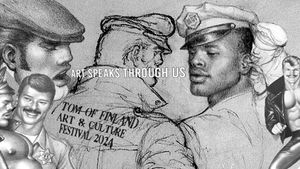I am barely a
teenager, perhaps 13, and spending the summer at a fishing
resort that my father owns. On this morning I wake a little
late and hear male voices outside the small cabin
where I sleep, adjacent to the main lodge. I am filled
with panic, knowing that men are outside already and
that I will have to cross the short distance between the
cabin and the lodge to dress and shower for the day.
Throwing on my
bathrobe, I wait until I can no longer hear the voices
before rushing out of the cabin. I have miscalculated,
however, because I am no more than a step or two
outside before I run directly into two men who are
leaning against the lodge, quietly smoking.
Our eyes lock,
and there is a look from one of the men that I have never
seen before. He smiles, nods, and says to me, "Good
morning, pretty girl."
That distant
memory surfaced recently when I was thinking about my
journey toward understanding, accepting, and loving
transgender women as an important part of the queer
community. The emotions I felt on that day were
different from those I normally experienced around straight
men. Fear was replaced with the discomfort and shame
of being identified as something I was not and did not
want to be.
Although I was
frequently harassed and even beaten up because of my
effeminacy as a child, it was only when I was mistaken for
female that I resolved to become more masculine. From
that day forward, although I have my feminine side, I
have always dressed and acted in a way that is more
butch than I actually am.
All of this is
important to me because, for the past several years, I
have been given the opportunity to interact with transgender
women and have been forced to acknowledge and examine
my discomfort with them. I was woefully uneducated on
the most basic concepts about gender; the word itself
seemed academic and remote. Although I had been an activist
for years and lived my adult life in New York City and
Los Angeles, I was ignorant about what it actually
meant to live in a body that doesn't match
one's soul. And I am not alone. I know so many gay
men, progressive in every other way, who view trans
people as embarrassments or threats.
Strangely, I have
never really known a transgender man, but my life is
full of trans women. Like many important personal
transformations I've undergone in the past
decade, my experience with trans women was made
possible through my work at the Van Ness Recovery House in
Los Angeles's Hollywood. When I worked as a
peer counselor there, I was confronted with the
difficulties experienced by the large number of transgender
female residents. Many of the women I met at the Van
Ness House had worked the streets just to survive,
developing addictions and contracting HIV along the
way.
While it is true
that my experiences with these women are skewed because
they were all recovering addicts, I was given the gift of
being in a setting where there was a commitment to
discuss any and all subjects with honesty. And these
seemingly broken-down women taught me as much about
trans life as I ever taught them about staying sober.
The
misunderstandings about trans life in the gay male community
are evident in the large number of gay men I know who
still have a difficult time differentiating between a
drag queen and a transgender woman. Many gay men
willfully refuse to accept the difference between playing a
stereotype of a woman and the very real pain of being a
woman in a body that is male.
While I had at
least moved beyond that thinking when I arrived at the Van
Ness House, I still harbored a suspicion that some trans
women identified as female because it made it easier
to have sex with men. As a gay man who tends to
sexualize every relationship, I got caught up in irrelevant
questions such as whether trans women who have sex with men
are straight or gay. I had to learn that their desire
to live female lives had little to do with sex.
Although most of the trans women I met in recovery had a
lot of sex, it was often about survival rather than
pleasure. The challenge for them was not to find sex
but to find out what it meant to live as women with
self-respect and integrity: a dream too large and
unimaginable for many of the troubled people I met.
The residents and
staff of the Van Ness House all responded to my lack of
awareness with great patience. At first the easiest
emotional response for me was pity. The transgender
women became little sisters and dress-up dolls to me.
And many of the women were all too happy to focus on their
appearance as they lived in terror of being
"clocked"--street slang for being
identified as trans--or being called a
"brick"--a derogatory term for a
trans woman who appears masculine.
My fantasy of
fixing the lives of these women by helping them to pass as
"real" women was totally smashed with the
arrival of a trans woman who could easily have been a
fashion model. She was chic, gorgeous--and
absolutely full of self-hatred. This beautiful, well-spoken
woman had spent her life in both expensive hotels and
emergency rooms, flying first-class one day and being
homeless the next.
This woman, whom
almost any straight man would desire, taught me that
many transgender people struggle with self-esteem regardless
of how they present physically. This, of course, was a
threatening revelation for a man who had lived the
stereotypical gay life of pretty places and pretty
people, interspersed with the most self-destructive behavior
imaginable. As with gay men, fixing the outside does
nothing to address the self-hatred that continues to
bubble underneath the surface.
Transgender women
have given me a very special gift over the past few
years by helping me to remember that although I was taunted
with insults like "faggot," what I was
truly shamed by was the question so many of us face
early in life: What are you? A boy or a girl? Whether asked
innocently or viciously, it is that question that haunts us.
As a gay man who had become a bit smug in the
acceptance I now find in the world, that question is a
reminder of how narrow the window of acceptance is and how
easy it would be to leave behind those whose very essence
threatens the mainstream. The fact that transgender
people challenge both gay and straight ideas of
respectability puts them at the core of the queer
struggle for civil rights.
I still visit the
Van Ness House regularly. Some of the trans women I met
there have made better lives for themselves, while others
have returned to the streets. But I have changed. The
other night I ran into a young trans woman I met while
working there. I no longer pitied her. I no longer
wanted to dress her up or fix her. I didn't have to
figure her out. I was simply glad to see her. My hope
is that many other gay men will have the luxury I had
to ask questions, be honest about their fears, and
learn to love trans women as our sisters.


















































































